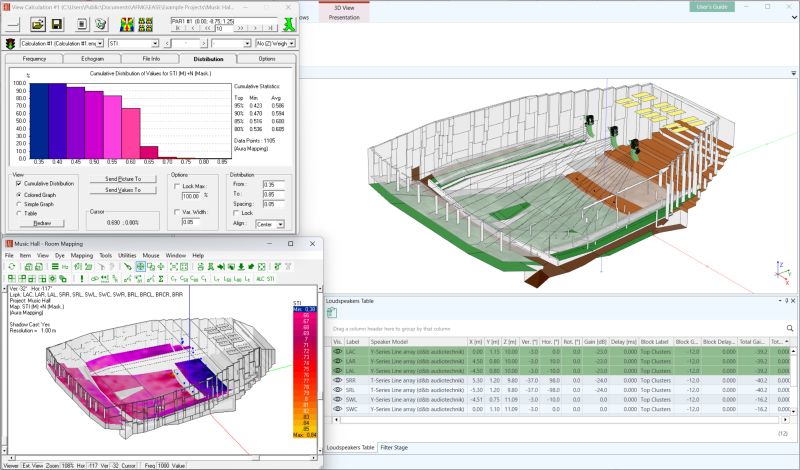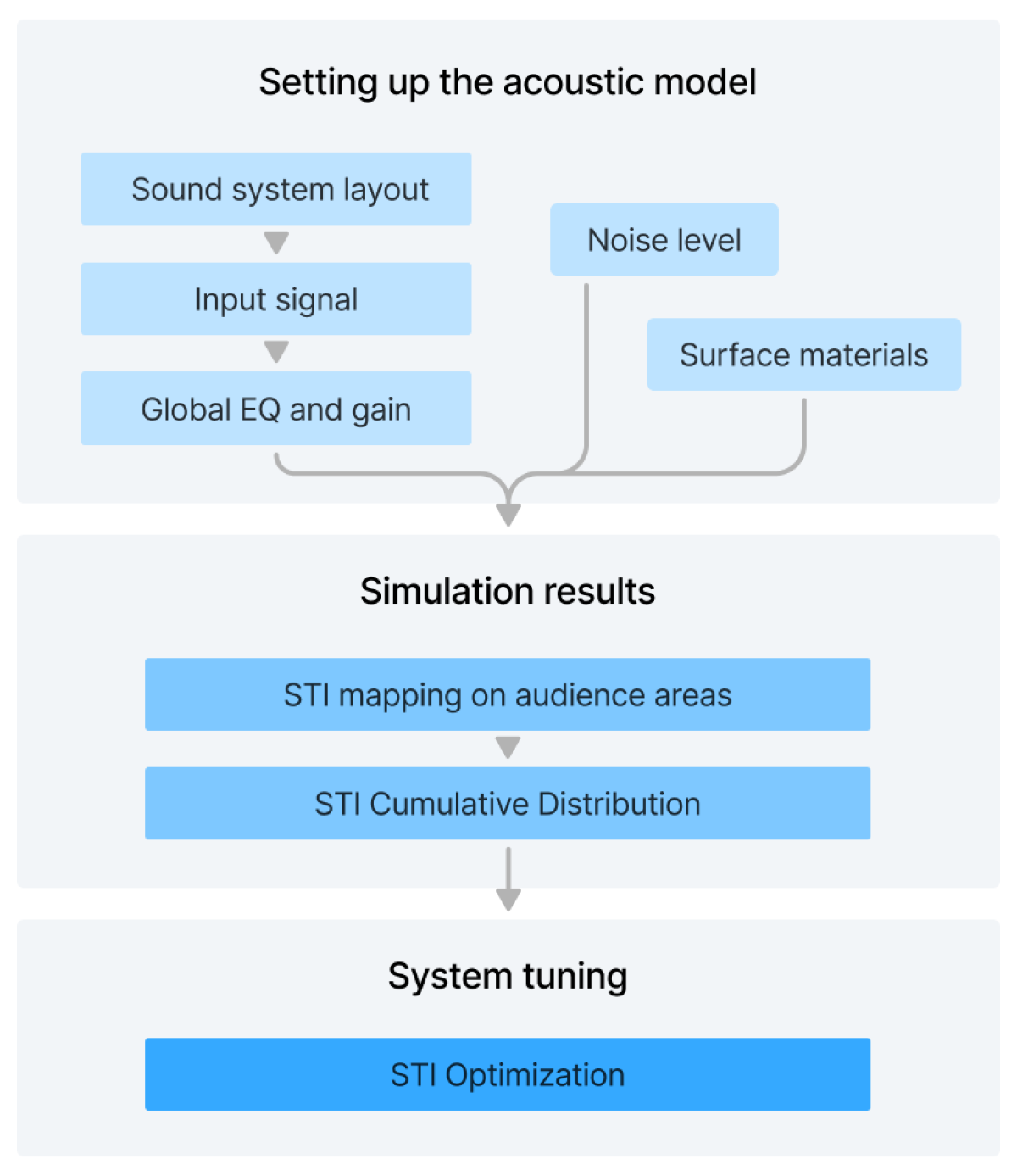EASE 5 - State-of-the-art assessment of speech intelligibility
"As a certified engineering office for planning VA systems we’re aware of being in charge of safety-relevant aspects of the project. We’re happy to rely on EASE 5 as efficient tool for standard-conform STI and RT calculations and based on acoustic parameters of the room. This is how we support the technical planners and architects in an efficient and cost-saving way."
Benedikt Kühle, Ingenieurbüro Ostendorf & Partner GmbH & Co. KG
- To ensure compliance with the standard, the speech input signal according to IEC 60268-16:2021 can be selected in the acoustic parameters window of EASE 5. This program signal represents the average frequency spectrum of male speakers and has an emphasis on the low frequency bands.
- For the ambient noise, values measured on site or standard curves can be used in 1/3rd or 1/1 octave resolution. An assumed broadband level can be entered, as well.
Optimizing the speech intelligibility in a room is often an iterative process that involves balancing the effect of signal masking at high signal levels with the influence of a low signal-to-noise ratio at low signal levels. For this purpose, EQ adjustments and high-pass filters may be applied, as well as the gain may be set globally, by group, or individually per loudspeaker.
Image
EASE 5 has a unique STI Optimization function (Standard and Pro licenses only) that automatically calculates the optimal signal level that represents the perfect balance between the highest signal-to-noise ratio and the lowest signal masking effect, and thus the highest possible STI for the project. This function is available in the post-processing phase after the mapping has been calculated and is therefore very fast.
Image
Computation results for the STI can be displayed and analyzed in 3D mapping plots, at individual receiver points, as well as statistically. In particular, the cumulative distribution graph allows making statements about the frequency and the minimum values of the STI across the considered audience area. In this manner, requirements such as the guaranteed STI for 90% of the listening area can be evaluated and compliance with standards like NFPA 72 or ISO 7240-19 and its national implementations like German VDE 0833-4 can be verified.
Image
If you want to optimize speech intelligibility in conformity with current standards, quickly and accurately, EASE 5 is the right tool.
Don't miss out our related paper "Optimizing Speech Intelligibility in Practical Applications using State-of-the-Art Acoustic Simulation Tools" presented at the International Acoustics & Sound Reinforcement Conference, 2024 January 22-26, Le Mans, France.

